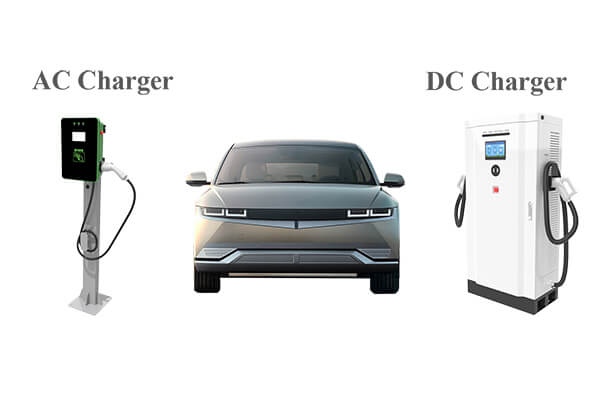FAQs about EV Charger
FAQs about EV Charger
What is EV charger?
EV charger is used to charge our electric vehicles, just like the pumps at gas stations that fill up fuel vehicles. EV chargers, which can be fixed to the ground or wall, are installed in public Spaces, residential complexes and charging stations, and then charge various models of electric vehicles according to different voltage levels. People can swipe a specific charging card on the man-machine interactive operation interface provided by the EV charger to conduct corresponding charging operations. The charger display screen can display charging quantity, cost, charging time and other data.
What is the charging principle of EV charger?
To charge an electric car is actually to charge the battery in the electric car. The charging principle is that after the battery is discharged, the direct current is used to pass the battery in the opposite direction from the discharge current to restore its working ability. This process is called battery charging. When the battery is charged, the positive pole of the battery is connected with the positive pole of the power supply, and the negative pole of the battery is connected with the negative pole of the power supply. The voltage of the charging power supply must be higher than the total electromotive force of the battery. Generally speaking, there are two charging modes of charging pile, namely constant current charging and constant voltage charging.
Constant current charging method: Constant current charging method is to adjust the output voltage of the charging device or change the resistance in series with the battery to keep the charging current intensity unchanged. The control method is simple, but because the acceptable current capacity of the battery is gradually decreased with the charging process, to the late charging, charging current is used for electrolytic water, gas generation, so that the gas is too much, therefore, often choose stage charging method.
Constant voltage charging method: the voltage of the charging power supply keeps a constant value during the whole charging time, and the current gradually decreases with the gradual increase of the battery terminal voltage. Compared with constant current charging method, its charging process is closer to the optimal charging curve. Fast charge with constant voltage. Because the initial battery electromotive force is low, charging current is very large, with the charging, the current will gradually reduce, therefore, only a simple control system.
What are the types of EV chargers?
At present, there are two common EV chargers on the market, one is DC charger, the other is AC charger.
DC charger: DC charger is fixed in some public places, such as residential communities, residential parking lots, commercial areas, service areas, outdoor parking lots, electric vehicle charging stations and other places. It is a charging device that provides DC power to non-on-board electric vehicle batteries by connecting them to the public grid. Because the DC charging pile can directly charge the battery of electric vehicles, three-phase four-wire system or three-phase three-wire system is generally used for power supply, and the output voltage and current can be adjusted in a wide range, so it can realize the rapid charging of electric vehicles. Therefore, the DC charging pile is also called fast charging. Due to the large output power, the power of DC charging includes 30kW, 60kW, 80kW, 120kW, 150kW, 180kW, etc.
AC charger: AC charger is also fixed in some public places outside electric vehicles, providing controllable unidirectional AC power supply or three-phase AC power supply device for the on-board charger of electric vehicles. It should be noted that the AC charger itself does not have the charging function. It only provides power output and can charge the battery of the electric vehicle by connecting the on-board charger of the electric vehicle. Since the power of on-board chargers of electric vehicles is generally low, ac charging piles cannot achieve fast charging, which is also called slow charging. AC charger output power is not very large, generally 3.5kW, 7kW, 15kW, etc.
